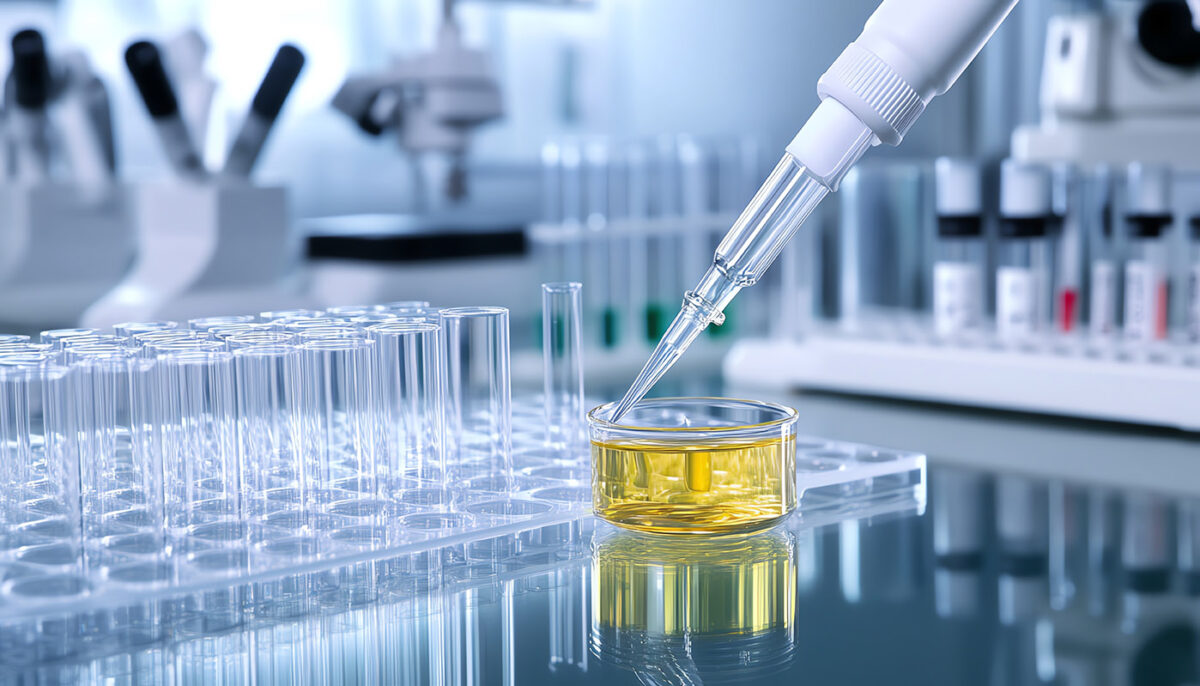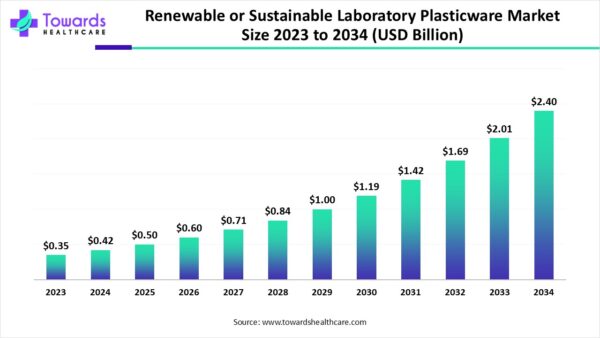Laboratories Shift from Single-use Plastics to Circular Solutions

Labs worldwide are moving beyond disposables, adopting circular plasticware solutions through innovation, regulation, and rising sustainability demands.
Industries worldwide increasingly scrutinize plastic waste, and laboratories face criticism because they depend heavily on single-use plasticware daily. Plastics remain indispensable for sterility, precision, and affordability; however, their ecological persistence underscores the urgent need for viable material alternatives. Consequently, laboratories are adopting renewable options, and this shift reflects systemic change in material choices rather than a passing sustainability trend.
This article draws on insights from Towards Healthcare, a global strategy consulting firm specializing in healthcare analytics and innovation. Their market analysis highlights how laboratories are beginning to transition toward renewable and circular plasticware solutions—signaling a systemic shift in material choices far beyond trend-driven adoption.
You can also read: Polypropylene Recycling from Disposable Face Masks.
A Market on the Move
The renewable laboratory plasticware market reached $0.42 billion in 2024, and projections indicate it will reach $0.5 billion by 2025. Moreover, analysts estimate growth toward $2.40 billion by 2034, reflecting an annual expansion rate exceeding 19 percent across key laboratory sectors. Such growth emerges from recycling breakthroughs, the commercialization of bioplastics, and supportive policies promoting the adoption of the circular economy in research and healthcare environments. Consequently, companies now design biodegradable polymers that match conventional plastics’ performance, while international initiatives promote reuse and closed-loop material systems.

Renewable or sustainable laboratory plasticware market size 2023 to 2034 (USD Billion). Courtesy of Towards Healthcare.
Environmental and Health Imperatives
Although plastics’ practicality is undeniable, their ecological and health consequences continue to pressure the urgent adoption of safer material solutions. The accumulation of non-biodegradable waste, marine pollution, and toxicity concerns has accelerated interest in sustainable bioplastic alternatives across laboratory operations. Renewable plastics, derived from corn, sugarcane, or starch-based feedstocks, biodegrade appropriately while effectively supporting recycling and composting practices. Furthermore, stricter regulations and public awareness campaigns amplify pressure on laboratories that generate large disposable waste streams, such as pipette tips.
Innovation in Action
Material science breakthroughs and cross-sector collaborations increasingly demonstrate how innovation can effectively align functionality, recycling, and environmental performance.
In 2025, Agilyx ASA and Carlos Monreal launched Plastyx Ltd. in Europe, significantly expanding advanced chemical recycling capacities. Also, India Vision Institute partnered with Plastic Odyssey to repurpose recycled plastics into eyewear products, proving practicality meets sustainability. Additionally, artificial intelligence now enhances recycling accuracy by improving sorting processes, reducing contamination, and ensuring consistently higher-quality recycled polymers.
Opportunities and Challenges
Despite optimism, significant barriers persist because laboratory plastics often demand specialized recycling infrastructure not widely available globally. Chemical contamination complicates recycling, and uneven facility distribution restricts regional adoption of renewable and recyclable laboratory plastic solutions. Additionally, higher production costs hinder some bioplastics, slowing their integration across laboratories that prioritize affordability alongside environmental stewardship. Nevertheless, biopolymers like PLA and PHA show promise because they biodegrade, originate from renewable resources, and meet laboratory performance requirements. Simultaneously, recycled plastics gain favor because they reduce energy use, lower production costs, and meet strict international quality standards.
Global Perspectives
Europe leads adoption with strong regulatory frameworks, while Asia, particularly China and India, drives growth through recycling and green technologies. Meanwhile, North America advances through private-sector investments and heightened awareness, accelerating both research and commercialization of alternative laboratory materials.
Outlook
Laboratories worldwide increasingly recognize environmental imperatives, technological opportunities, and regulatory demands as interdependent forces shaping plasticware transitions.
Although infrastructure gaps and cost challenges remain, renewable and circular laboratory solutions are steadily embedding into global research practices. Ultimately, this transformation signals not only industry adaptation but also a meaningful contribution toward broader environmental and sustainability goals.
Written by Kesiya Chacko, Principal Consultant at Towards Healthcare
Edited for online by Juliana Montoya
